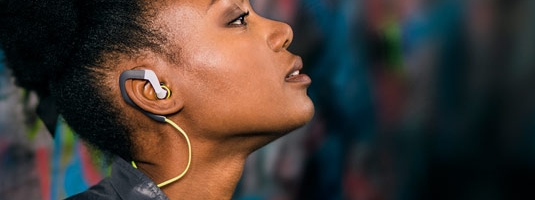
What do you have in your wardrobe? a cool skirt, a stylish dress, a nice pair of jeans? They are cool now. But after a season, that shirt might be no longer cool and the colors of your sweaters no longer shiny! While shopping, you might see a great shirt, a beautiful blouse and a really great pair of jeans. You gotta have them! And so your wardrobe is getting fuller everyday, with always more clothes, (that only last one season).
Clothing is a statement. It shows how you are, how you feel and it can certainly contribute to your self-esteem. But the fashion world is certainly not environment friendly. The production of a shirt requires about 3000 liters of water! That’s how much you would spend in 3 years, and that’s not the only problem: often the production involves child labor, low wages and a lot of toxic chemicals.
The only alternative is to choose slow-fashion, sustainable or fairtrade clothing, But what’s the difference?
Slow fashion: timeless and high quality
If you buy slow fashion clothes, you are choosing a conscious alternative to fast fashion. Fast fashion is: mass production, cheap quality fabrics, low wages for workers. Most of this type of clothing will only last one season. The colors will fade and the fabric will shrink. In fast fashion there is little attention to the environment, to the people and to the quality, probably because items are produced at such a high pace! Slow fashion is the opposite. The fabrics used last long and are of excellent quality, such as linen, silk and wool. A slow-fashion piece of clotheing costs more, but lasts for years! Slow fashion is timeless fashion, and by the way, second-hand clothes are also durable and part of the slow fashion category. Sustainable clothing: lasts a long time In sustainable clothing the working conditions of the workers are safe and they receive fair wages. The clothes themselves are also of good quality. Sustainable means the item will last a long time. Examples of sustainable fabrics are bamboo, linen, nettle, hemp and organic cotton. During production, the damage to environment is minimized. Fairtrade Fairtrade focuses on fair conditions. All workers and employees get a fair wage, which allows them to live a good life. It is very helpful especially it a fai trade product is purchased directly from the third-country producer. If you buy fairtrade clothes, you know that all the people involved are well paid for their work. In production, no children are deployed and the hiring company provides healthcare, education and environmentally friendly production methods. Those 3 categories of clothing are very similar, and ultimately, that might be even better for your wallet. Because if you buy clothes that last only one season you are really throwing away money!
If you buy slow fashion clothes, you are choosing a conscious alternative to fast fashion. Fast fashion is: mass production, cheap quality fabrics, low wages for workers. Most of this type of clothing will only last one season. The colors will fade and the fabric will shrink. In fast fashion there is little attention to the environment, to the people and to the quality, probably because items are produced at such a high pace! Slow fashion is the opposite. The fabrics used last long and are of excellent quality, such as linen, silk and wool. A slow-fashion piece of clotheing costs more, but lasts for years! Slow fashion is timeless fashion, and by the way, second-hand clothes are also durable and part of the slow fashion category. Sustainable clothing: lasts a long time In sustainable clothing the working conditions of the workers are safe and they receive fair wages. The clothes themselves are also of good quality. Sustainable means the item will last a long time. Examples of sustainable fabrics are bamboo, linen, nettle, hemp and organic cotton. During production, the damage to environment is minimized. Fairtrade Fairtrade focuses on fair conditions. All workers and employees get a fair wage, which allows them to live a good life. It is very helpful especially it a fai trade product is purchased directly from the third-country producer. If you buy fairtrade clothes, you know that all the people involved are well paid for their work. In production, no children are deployed and the hiring company provides healthcare, education and environmentally friendly production methods. Those 3 categories of clothing are very similar, and ultimately, that might be even better for your wallet. Because if you buy clothes that last only one season you are really throwing away money!
